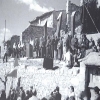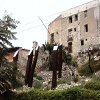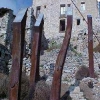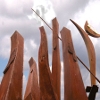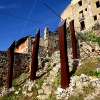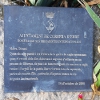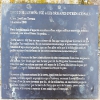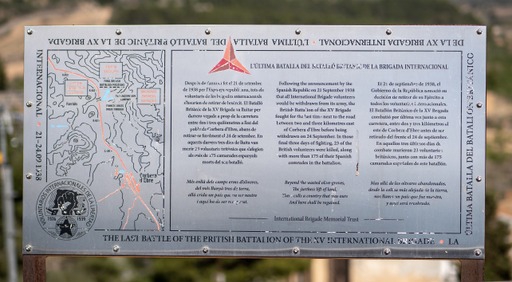The international brigades Memorial opened October 2000 and work of the artist José Luis Terraza.
In this sculpture noble, natural materials have been used, such as iron and stone. Natural stone from the place where they occurred the events that led to the creation of the international brigades; and it is in the center of this place, the "Poble Vell' Corbera de Ebro, where this monument, honoring the birth, performance and purpose of these brigades, it was none other than solidarity with the Spanish people in defense of its democratic institutions.
Around of 50,000 volunteers from fifty countries around the world are enlisted to assist in the defense of Republican democracy from October 1936. Its varied provenance joins its differentiated professional profile, although all joined them the ideal fight fascism that would end up destroying the brief democratic Spanish Republican experience.
The withdrawal of the international brigades took place on the night of 23 to 24 September 1938. September 23 was the day of the last battle and the sealed with dignity its legendary history of struggle for freedom of the Spanish people and all peoples of the world, threatened by the fascist barbarism.
The five iron columns symbolize the five continents who were the men and women who took part in the international brigades. Columns, in the same way these men and women, born of the earth and its spirit is projected to the universe recreating its philosophy and its purpose in the new youth making solidarity a movement perpetual and infinite; This symbolized by the ball of iron that comes from the earth, passing through the column, recreates in it and continues on its way toward eternity.
